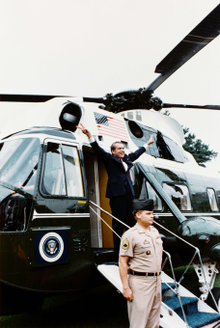
The Boeing Vertol CH-46 Sea Knight is an American medium-lift tandem-rotor transport helicopter powered by twin turboshaft engines. It was designed by Vertol and manufactured by Boeing Vertol following Vertol's acquisition by Boeing.

Air Force One is the official air traffic control designated call sign for a United States Air Force aircraft carrying the president of the United States. In common parlance, the term is used to denote U.S. Air Force aircraft modified and used to transport the president and a metonym for the primary presidential aircraft, VC-25, although it can be used to refer to any Air Force aircraft the president travels on.
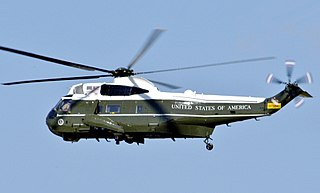
Marine One is the call sign of any United States Marine Corps aircraft carrying the president of the United States. It usually denotes a helicopter operated by Marine Helicopter Squadron One (HMX-1) "Nighthawks", consisting of either the large Sikorsky VH-3D Sea King or the newer, smaller VH-60N "White Hawk". Both helicopters are called "White Tops" because of their livery. Any Marine Corps aircraft carrying the vice president of the United States without the president has the call sign Marine Two.

The Sikorsky CH-37 Mojave is an American large heavy-lift helicopter of the 1950s.

The Sikorsky CH-53E Super Stallion is a heavy-lift helicopter operated by the United States military. As the Sikorsky S-80, it was developed from the CH-53 Sea Stallion, mainly by adding a third engine, adding a seventh blade to the main rotor, and canting the tail rotor 20°. It was built by Sikorsky Aircraft for the United States Marine Corps. The less common MH-53E Sea Dragon fills the United States Navy's need for long-range minesweeping or airborne mine countermeasures missions, and performs heavy-lift duties for the Navy. The Sikorsky CH-53K King Stallion, which has new engines, new composite rotor blades, and a wider aircraft cabin, is set to replace the CH-53E.

Marine Helicopter Squadron One (HMX-1) is a United States Marine Corps helicopter squadron responsible for the transportation of the president and vice president of the United States, heads of state, Department of Defense officials, and other VIPs as directed by the Marine Corps and White House Military Office. A Marine helicopter with the president aboard uses the call sign "Marine One". Previously, HMX-1 was also tasked with operational test and evaluation (OT&E). This task was reassigned to VMX-1 in Yuma, Arizona; since the contract award of the new presidential helicopter in 2014 to Sikorsky Aircraft, however, HMX-1 has assumed the temporary role of OT&E for this platform, because of its unique nature and mission. The VH-92A first flew in 2017 and is expected to be operational sometime after 2022. Nicknamed "Nighthawks", HMX-1 is headquartered at Marine Corps Air Facility Quantico, Virginia, and maintains detachments at Joint Base Anacostia–Bolling in Washington, D.C., and Joint Base Andrews Naval Air Facility in Maryland.

Air assault is the movement of ground-based military forces by vertical take-off and landing (VTOL) aircraft, such as helicopters, to seize and hold key terrain that has not been fully secured, and to directly engage enemy forces behind enemy lines. In addition to regular infantry training, air-assault units usually receive training in rappelling, fast-roping techniques, and air transportation. Their equipment is sometimes designed or field-modified to allow better transportation and/or carrying within aircraft.
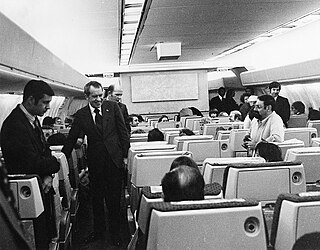
Executive One is the call sign designated for any United States civil aircraft when the president of the United States is on board. Typically, the president flies in military aircraft that are under the command of the Presidential Airlift Group, which include Air Force One, Marine One, Army One, Navy One and Coast Guard One.

Air Force Two is the air traffic control designated call sign held by any United States Air Force aircraft carrying the vice president of the United States, but not the president. The term is often associated with the Boeing C-32, a modified 757 which is most commonly used as the vice president's transport. Other 89th Airlift Wing aircraft, such as the Boeing C-40 Clipper, C-20B, C-37A, and C-37B, have also served in this role. The VC-25A, the aircraft most often used by the president as Air Force One, has also been used by the vice president as Air Force Two.
The Rapid Deployment Joint Task Force (RDJTF) is an inactive United States Department of Defense Joint Task Force. It was first envisioned as a three-division force in 1979 as the Rapid Deployment Force (RDF), a highly mobile rapid deployment force that could be rapidly moved to locations outside the normal overseas deployments in Europe and Korea. Its charter was expanded and greatly strengthened in 1980 as the RDJTF. It was inactivated in 1983, and re-organized as the United States Central Command (USCENTCOM).
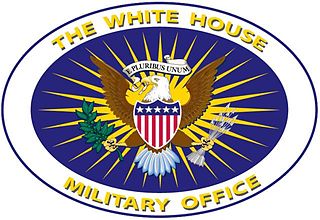
The White House Military Office (WHMO) is a department within the White House Office that provides military support for White House functions, including food service, presidential transportation, medical support, emergency medical services and hospitality services. The White House Military Office is headed by the White House Military Office Director.

The Sikorsky H-5 is a helicopter built by Sikorsky Aircraft Corporation.
Air transports for heads of state and government are, in many countries, provided by the air force in specially equipped airliners or business jets. One such aircraft in particular has become part of popular culture: Air Force One, used by the President of the United States and operated by the United States Air Force. Other well-known official aircraft include the Russian presidential aircraft, the British Royal Air Force VIP aircraft, the French Cotam 001, the Royal Canadian Air Force VIP aircraft, the German Konrad Adenauer, the Royal Australian Airforce VIP aircraft, the Japanese Air Force One, the South Korean Code One, the Indian Air India One, the Brazilian Air Force One, and the Israeli Wing of Zion.

Brazilian Air Force One is the Brazilian Air Force call sign of the aircraft carrying the President of Brazil. On international flights the aircraft uses the Brazilian Air Force ICAO code BRS1 and callsign Brazilian Air Force 01. The Special Transport Group (GTE) is the unit of the Brazilian Air Force responsible for transporting the President, Vice-President and other senior government officials.

Marine Heavy Helicopter Squadron 366 (HMH-366) was a United States Marine Corps helicopter squadron consisting of CH-53E Super Stallion heavy transport helicopters. The squadron, known as the "Hammerheads," was based at Marine Corps Air Station New River and fell under the command of Marine Aircraft Group 29 and the 2nd Marine Aircraft Wing. The squadron's tail code was "HH." At the squadron's reactivation on 30 September 2008, it had 130 Marines and 8 aircraft on-hand which grew to more than 300 Marines and 16 aircraft in 2009. The squadron was decommissioned on 16 December 2022 in accordance with Force Design 2030

The United States Air Force Special Air Mission provides air transportation for the president of the United States (POTUS), vice president of the United States (VPOTUS), first lady of the United States (FLOTUS), presidential Cabinet, U.S. congressional delegations (CODELs), and other high-ranking American and foreign dignitaries.
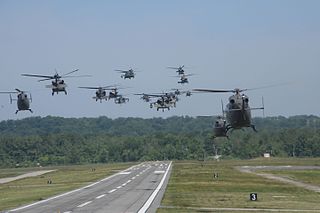
Davison Army Airfield or Davison AAF is a military use airport serving Fort Belvoir, in Fairfax County, Virginia, United States.

VXX, officially the Presidential Helicopter Replacement Program, is a procurement program to replace aging Marine One helicopters that transport the President of the United States. The current VH-3 helicopters have aging airframes, having entered service with United States Marine Corps Marine Helicopter Squadron One (HMX-1) in 1963. The VH-3D replaced the VH-3A by 1976. The smaller VH-60N entered service in 1987. On 7 May 2014, it was announced that the Sikorsky VH-92 had won the VXX competition.
Military call signs are call signs or specialized form of nickname assigned as unique identifiers to military communications. In wartime, monitoring an adversary's communications can be a valuable form of intelligence. Consistent call signs can aid in this monitoring, so in wartime, military units often employ tactical call signs and sometimes change them at regular intervals. In peacetime, some military stations will use fixed call signs in the international series.
